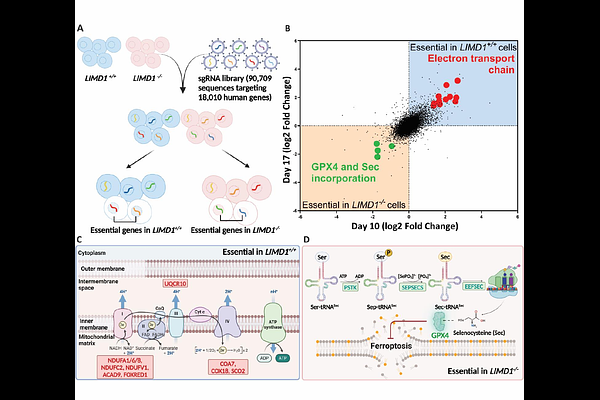LIMD1 Loss Confers a GPX4-Dependent Cell State in Lung Cancer

LIMD1 Loss Confers a GPX4-Dependent Cell State in Lung Cancer
Saha, A.; Grevitt, P.; Marques, J. G.; Von Kriegsheim, A.; Shah, K. M.; Gao, Z.; Stockwell, B. R.; Finch, A. J.; Peck, B.; Sharp, T. V.
AbstractLIMD1 (LIM domains containing 1) is a bona-fide tumour suppressor gene frequently lost during the early stages of non-small cell lung cancer (NSCLC) development, resulting in a worse outcome for LIMD1-deficient patients. LIMD1 deficiency is present in approximately 50% of NSCLC cases, representing at least 21,000 patients in the United Kingdom and 1.2 million worldwide. During cancer progression, cells can accumulate genetic changes that render them more dependent on certain genes for their survival. By performing CRISPR-Cas9 dropout screens, we identified GPX4 as a novel vulnerability in LIMD1 deficient LUAD cells. By targeting GPX4 using RNA interference (RNAi) and pharmacological intervention in our isogenic LUAD lines along with a non-transformed lung cell line, we validated GPX4 as a novel dependency in LIMD1 deficient cells. GPX4 is a key defence mechanism against ferroptosis, an iron-dependent form of regulated cell death. This state of increased ferroptosis susceptibility upon LIMD1 loss is due to increased basal reactive oxygen species levels and lipid peroxidation. Importantly, targeting GPX4 with ferroptosis inducing agents in NSCLC patients with LIMD1 loss may represent a novel therapeutic strategy.